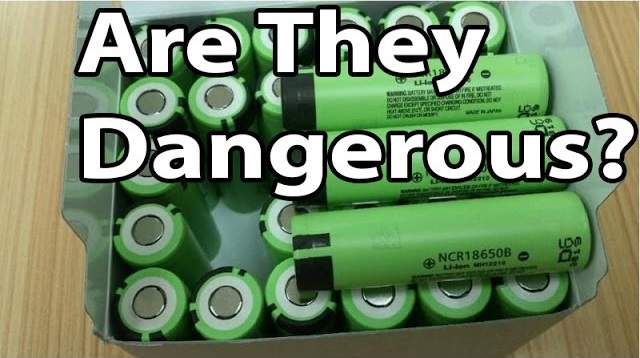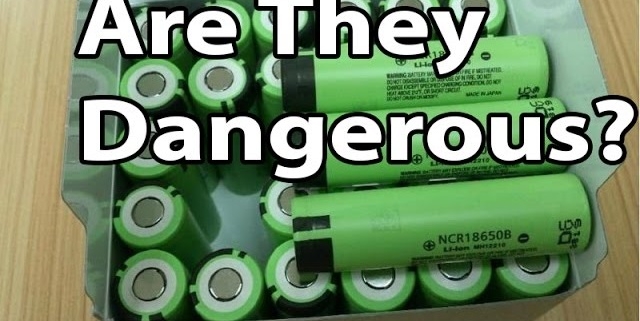Are 18650 Batteries Safe? The Complete Safety Guide
Are 18650 batteries safe? The short answer is yes—when you handle them correctly. But misuse them, and they can become dangerous fast.
Here’s the deal:
18650 batteries pack serious power into a small package. That’s why they’re everywhere—from Tesla cars to your laptop to high-powered flashlights. But that same energy density that makes them useful also makes them potentially hazardous.
As a professional 18650 battery pack manufacturer, I’ve been using 18650s for years in various devices. And I’ve learned that safety comes down to understanding what you’re dealing with and following some basic rules.
Let me break down everything you need to know about 18650 battery safety.

What Makes 18650 Batteries Different (And Potentially Dangerous)
First, let’s get clear on what we’re talking about.
An 18650 battery is a lithium-ion cell that’s 18mm wide and 65mm long. The “0” just means it’s cylindrical.
These aren’t your regular AA batteries. They store way more energy. A typical 18650 holds about 10-13 watt-hours of power. That’s roughly 3-4 times more than a standard AA battery.
And here’s where things get interesting:
All that concentrated energy needs respect. When something goes wrong with an 18650, it doesn’t just stop working. It can overheat, vent toxic gases, catch fire, or even explode.
The main danger? Something called thermal runaway.
Understanding Thermal Runaway (The #1 Risk)
Thermal runaway is when a battery starts heating itself in an unstoppable chain reaction.
Here’s how it works:
Something damages the battery or causes it to overheat. Maybe you overcharged it. Maybe you dropped it. Maybe you left it in a hot car.
Once the internal temperature hits a critical point (usually around 140°C), the battery’s internal components start breaking down. This breakdown releases more heat. Which causes more breakdown. Which releases more heat.
You get the picture.
Within seconds, the battery can reach temperatures over 500°C. Hot enough to ignite nearby materials and cause serious burns.
I once saw a poorly handled 18650 go into thermal runaway. The battery vented white smoke, then flames, all within about 10 seconds. The smell was awful. And the heat was intense enough to melt plastic from several feet away.
That’s why proper handling matters so much.
The Real Safety Risks You Need to Know
Beyond thermal runaway, 18650 batteries pose several specific risks:
Short Circuits
This happens when the positive and negative terminals connect directly. Maybe through a metal object in your pocket. Maybe through damaged battery wrap.
The result? All that stored energy dumps out at once. The battery heats up instantly. Best case, you get a hot battery and maybe a small burn. Worst case, thermal runaway.
Physical Damage
Dents, punctures, or crushed cells compromise the internal structure. The battery’s internal layers can touch, creating an internal short circuit.
Even small damage matters. I’ve seen batteries with tiny dents fail catastrophically days later.
Overcharging and Over-discharging
Push a lithium battery beyond its voltage limits, and you damage its internal chemistry.
Overcharging (above 4.2V for most 18650s) causes lithium plating. This creates sharp metal crystals inside the battery that can pierce internal barriers.
Over-discharging (below 2.5V) can cause copper dissolution. This contamination can lead to internal shorts when you recharge.
Poor Quality Cells
The market is flooded with fake and substandard 18650s. These cheap cells often lack basic safety features and use inferior materials.
They’re the batteries most likely to fail dangerously.
How to Use 18650 Batteries Safely (Step-by-Step)
Now for the practical stuff. Here’s exactly how to handle 18650s safely:
1. Buy Quality Cells from Reputable Sources
Stick to known brands like Samsung, Sony/Murata, LG, or Panasonic. Buy from established vendors, not random eBay sellers.
Avoid any brand with “Fire” in the name. UltraFire, TrustFire, and similar brands are usually rewrapped rejects.
A genuine Samsung 25R costs about $5-6. A fake might cost $2. That $3 savings isn’t worth burning down your house.
2. Inspect Before Every Use
Make this a habit:
Check the battery wrap for any tears, nicks, or damage. Even tiny tears near the positive terminal are dangerous.
Look for dents, bulges, or any physical deformation.
Check for any leaking or corrosion.
If you spot any damage, stop using that battery immediately.
3. Use Proper Storage
Never, ever carry loose 18650s in your pocket or bag.
I’ll say that again: Never carry loose batteries with other metal objects.
Use plastic cases. They cost about $1 each. Every battery should have its own slot.
Store batteries in a cool, dry place. Extreme temperatures degrade cells faster and increase failure risk.
For long-term storage, charge cells to about 40-60% capacity. This minimizes stress on the chemistry.
4. Charge Correctly
Use a quality charger designed for lithium-ion cells. Good chargers have:
- Overcharge protection
- Reverse polarity protection
- Individual bay monitoring
- Automatic termination
Never leave batteries charging overnight or unattended for hours. Yes, good chargers should stop automatically. But chargers can fail.
Remove batteries once they’re charged. Leaving them in the charger adds unnecessary heat cycles.
5. Match Your Batteries to Your Device
Some devices need protected cells (with built-in safety circuits). Others require unprotected cells and handle protection internally.
Using the wrong type can damage your device or create safety hazards.
Always check your device manual or manufacturer specifications.
6. Monitor Operating Temperature
18650s should never get too hot to hold comfortably. If a battery feels hot during use or charging, something’s wrong.
Stop using it immediately and let it cool in a safe place (like a concrete floor away from flammables).
Protected vs Unprotected Cells: Which Is Safer?
This confuses a lot of people.
Protected 18650s have a small circuit board attached to the negative terminal. This PCB (protection circuit board) guards against:
- Overcharging
- Over-discharging
- Short circuits
- Excessive current draw
Sounds safer, right? Usually, yes.
But here’s the catch:
Some devices are designed for unprotected cells. They have their own protection built in. Adding a protected cell can interfere with the device’s operation or even create new hazards.
For example, high-drain devices like powerful flashlights often need unprotected cells. The protection circuit can’t handle the current draw and becomes a failure point.
My rule? Use protected cells unless your device specifically requires unprotected ones.
Common Misconceptions About 18650 Safety
Let me clear up some dangerous myths:
“Quality batteries don’t need careful handling”
Wrong. Even the best 18650 can fail if abused. Samsung and Sony cells are very safe when used properly. But damage them or short them, and they’re just as dangerous as cheap cells.
“Protected cells are completely safe”
Protection circuits help, but they’re not magic. They can fail. They can be overwhelmed. Physical damage bypasses them entirely.
“If it fits, it’s safe to use”
Many devices that fit 18650s aren’t designed for them. Using high-capacity lithium cells in devices meant for NiMH batteries can overload circuits and cause fires.
“Slightly damaged wrap is okay”
Any wrap damage is potentially dangerous. The wrap is the only thing preventing shorts along the entire cell body. Even a pinhole can cause problems.
Real-World Safety: My Personal Protocol
Here’s exactly what I do with my 18650s:
Daily Use:
- Visual inspection before inserting in any device
- Batteries go from charger to device to case—never loose
- Different cases for charged and depleted cells
- Rotation system so no cell sits unused for months
Charging:
- Only when I’m home and awake
- Set a timer if I might forget
- Charge on a non-flammable surface
- Never more than 4-6 cells at once
Storage:
- Plastic cases only, never loose
- Cool basement location, away from heat sources
- Partial charge for long-term storage
- Date labels on cells so I know their age
Disposal:
- Discharge to under 1V using a resistor
- Tape terminals with electrical tape
- Recycling center drop-off, never regular trash
When to Dispose of an 18650 Battery
Knowing when to retire a cell is crucial for safety:
Dispose immediately if:
- Wrap is damaged and you can’t rewrap
- Any physical damage (dents, bulges, leaks)
- Gets hot during normal use
- Won’t hold charge properly
- Over 3 years old (for regular use)
- Has been over-discharged below 2V
- Shows any corrosion or leaking
Don’t try to squeeze extra life from questionable cells. A new battery costs $5. Medical bills and property damage cost thousands.
Emergency Response: What If Something Goes Wrong?
Despite precautions, accidents happen. Here’s what to do:
If a battery gets hot:
- Don’t touch it directly
- Move it to a safe area (concrete floor, away from flammables)
- Use tongs or pliers if needed
- Let it cool completely before disposal
- Ventilate the area
If a battery vents or catches fire:
- Evacuate the immediate area
- Call 911 if the fire spreads
- Use a Class D fire extinguisher if available
- Never use water on a lithium fire
- Ventilate thoroughly—the fumes are toxic
If exposed to battery chemicals:
- Don’t touch the material
- Evacuate and ventilate the area
- Wash any skin contact with lots of water
- Seek medical attention for exposure
The Bottom Line on 18650 Safety
So, are 18650 batteries safe?
Yes—with proper handling. They’re arguably safer than many other power sources when you respect their limitations.
The key is understanding that these aren’t regular batteries. They’re high-energy devices that demand respect and proper procedures.
Follow the safety guidelines I’ve outlined. Buy quality cells. Store them properly. Inspect them regularly. Charge them carefully.
Do these things, and 18650s are remarkably safe and reliable power sources.
Skip these precautions, and you’re playing with fire—literally.
The choice is yours. But now you have the knowledge to make the safe choice.
Remember: every 18650 battery incident I’ve investigated came down to user error or ignoring basic safety rules. Knowledge and proper habits prevent virtually all problems.
Stay safe, respect the technology, and you’ll get years of reliable service from your 18650 batteries. Are 18650 batteries safe when handled with care and proper knowledge? Absolutely.








